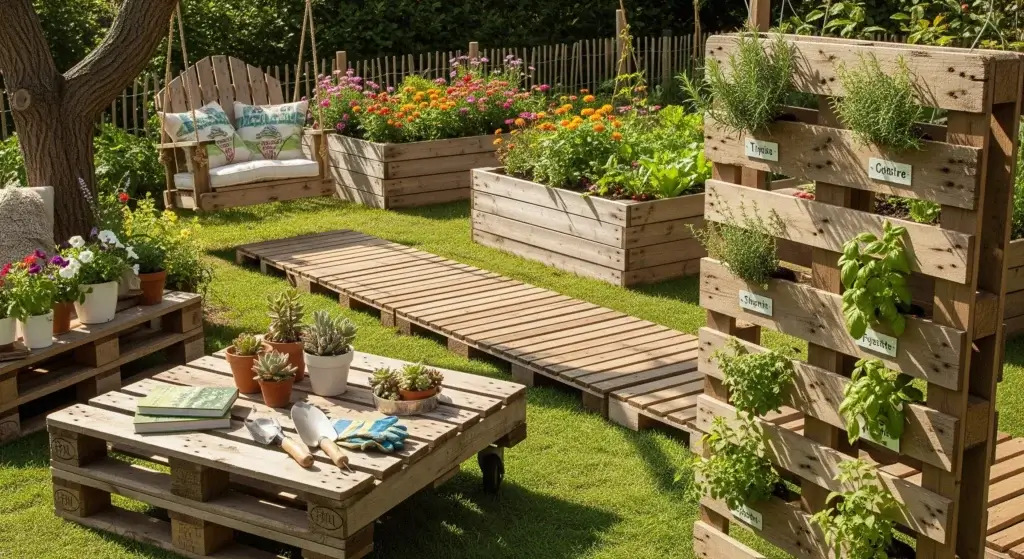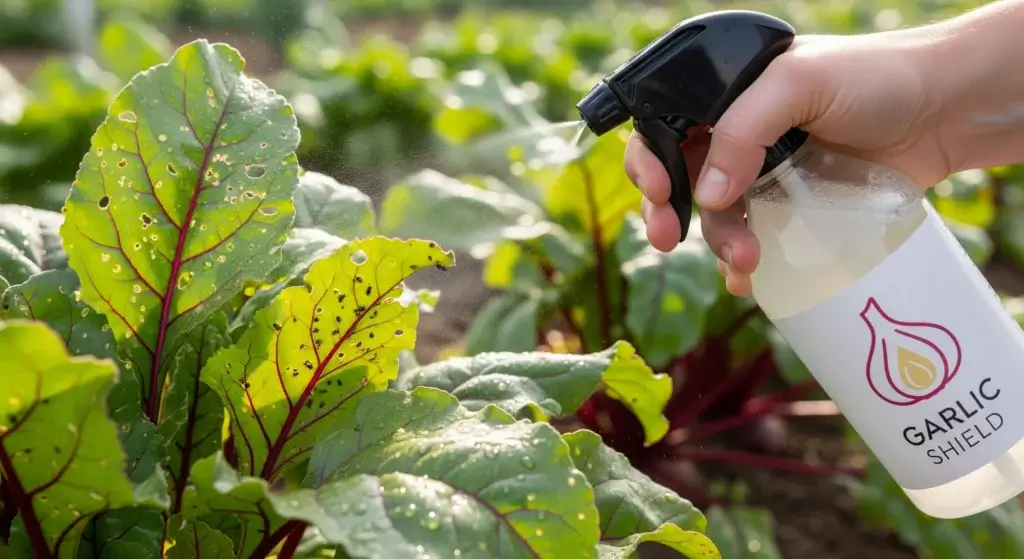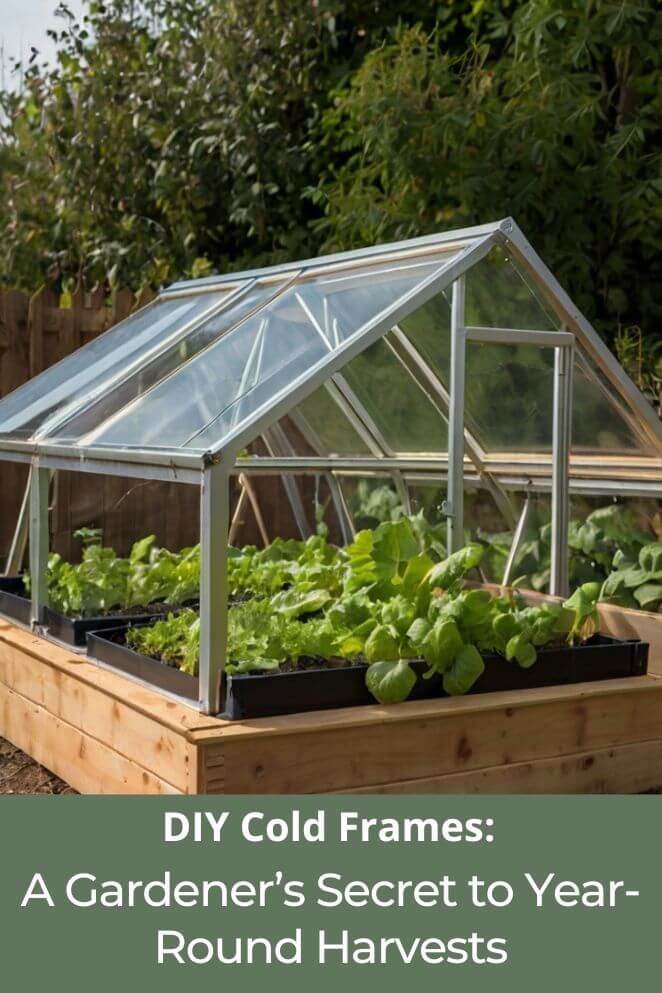
If you love gardening but hate saying goodbye to fresh produce when temperatures drop, a DIY cold frame might be the perfect solution.
Cold frames act like mini-greenhouses, trapping heat and protecting plants from frost, allowing you to start your garden earlier in spring and keep it going into fall and winter.
The best part?
You can build one yourself using affordable, repurposed materials. Let’s dive into why cold frames are essential and how to create your own.
Why Use a Cold Frame?
Cold frames are a gardener’s secret weapon for growing more, longer, and with less hassle.
Here’s why they’re worth trying:
Protect plants from frost
Cold frames act like a cozy blanket for your plants, shielding them from frost and sudden cold snaps.
This means your tender plants stay safe and healthy, even when the weather turns harsh.
- Read also: DIY Plant Covers for Winter: Protect Your Greenery
- Read also: DIY Plant Humidifier: Simple Solutions for Healthy Indoor Greenery
Start seeds earlier
With a cold frame, you can get a head start on the growing season.
The trapped warmth inside creates a mini greenhouse effect, helping seeds sprout weeks before they would outdoors.
Extend harvest in fall/winter
Don’t let the first frost end your gardening season.
Cold frames let you grow cold-hardy veggies like lettuce, kale, and carrots well into the cooler months, so you can enjoy fresh produce even in winter.
Simple and affordable
Unlike greenhouses, which can be expensive and complicated, cold frames are easy to build and budget-friendly.
Whether you use old windows, hay bales, or other materials, you can create one without breaking the bank.
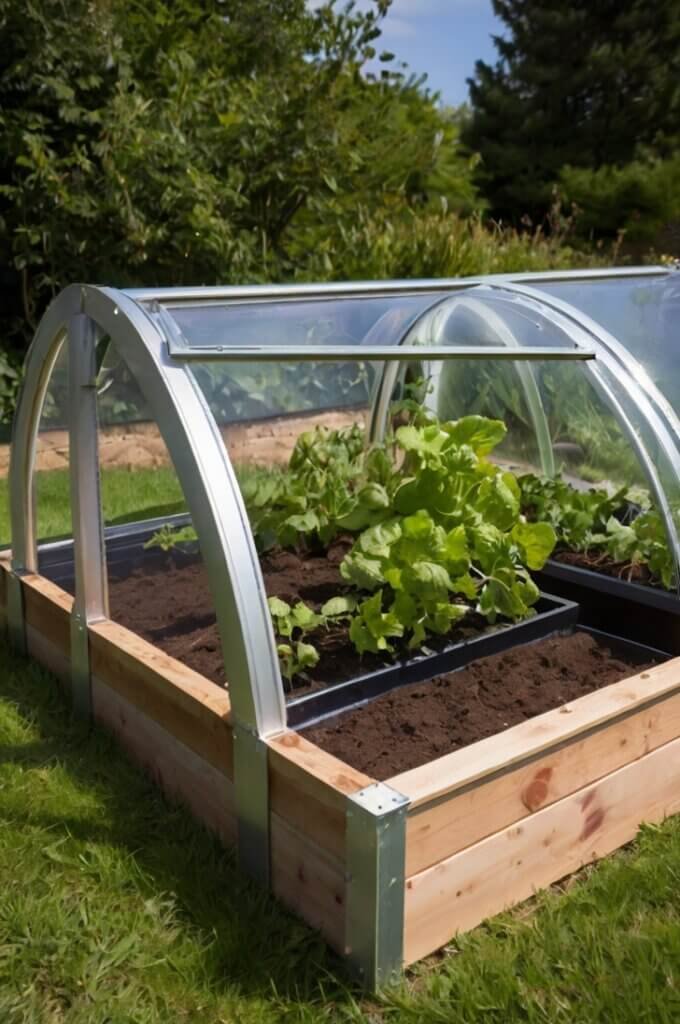
Simple DIY Cold Frame Ideas
Idea 1: Upcycled window frame cold frame
Turn an old window into a practical cold frame! This project is simple, eco-friendly, and perfect for protecting your plants.
Here’s how to do it:
Materials you’ll need
- An old window with glass (check garage sales or recycling centers)
- Scrap wood (to build the frame)
- Hinges
- Screws
Steps to build it
- Build a wooden frame slightly larger than the window. This will be the base of your cold frame.
- Attach the window to the top of the frame using hinges. This lets you open and close it easily for ventilation.
- Place the cold frame in a sunny spot and tilt it slightly to help with drainage.
Tips for success
- Use weather-resistant wood, like cedar or treated lumber, to make your cold frame last longer.
- Make sure the window can be propped open easily to let in fresh air and prevent overheating on sunny days.
Idea 2: Bale of hay cold frame
If you’re looking for a quick, no-fuss way to protect your plants, a hay bale cold frame is a fantastic option.
It’s simple, temporary, and perfect for seasonal use. Here’s how to make one:
Materials you’ll need
- 4 bales of hay
- An old window or a clear plastic sheet
Steps to build it
- Arrange the hay bales into a rectangle shape, leaving an open space in the middle for your plants.
- Place the old window or clear plastic sheet on top of the bales to create a cover.
- Adjust the cover as needed to allow for ventilation, especially on warmer days.
Tips for success
- This setup is ideal for temporary use, like during fall or early spring, when you need short-term protection for your plants.
- Keep an eye on the hay bales. If they start to break down or decompose, replace them to keep your cold frame sturdy.
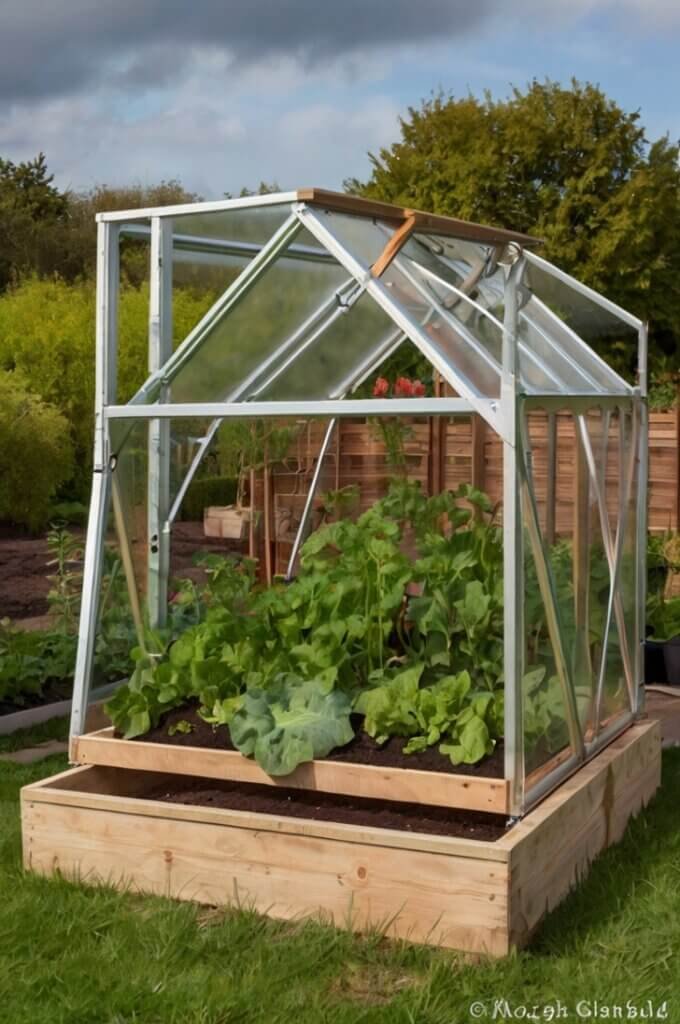
Idea 3: Plastic tub cold frame
For a quick and easy cold frame solution, try using a clear plastic storage tub.
It’s simple, affordable, and perfect for small-scale gardening.
Here’s how to make it work:
Materials you’ll need
- A large clear plastic storage tub (the kind with a lid)
- Optional: Wood scraps or other materials for extra insulation
Steps to build it
- Place the plastic tub upside down over your plants, creating a mini greenhouse effect.
- If it’s windy, secure the tub with bricks or rocks to keep it in place.
Tips for success
- Choose a tub with a removable lid for easy access to your plants.
- If the tub doesn’t have ventilation, drill a few small holes to let in fresh air and prevent overheating.
Idea 4: Simple wood box cold frame
A wooden cold frame is a classic, sturdy option that’s perfect for gardeners who want a durable and functional solution.
Here’s how to build one:
Materials you’ll need
- Wood planks (like pine or cedar)
- Clear plastic sheeting or an old glass window
- Hinges
- Screws
Steps to build it
- Build a rectangular wooden box using the planks. This will be the base of your cold frame.
- Attach the clear plastic sheeting or old window to the top of the box using hinges. This lets you open and close the lid for ventilation.
- Place the cold frame in a sunny spot in your garden.
Tips for success
- Paint or seal the wood to protect it from weather damage and make it last longer.
- Angle the frame slightly to help it catch more sunlight and improve drainage.
Important Cold Frame Tips
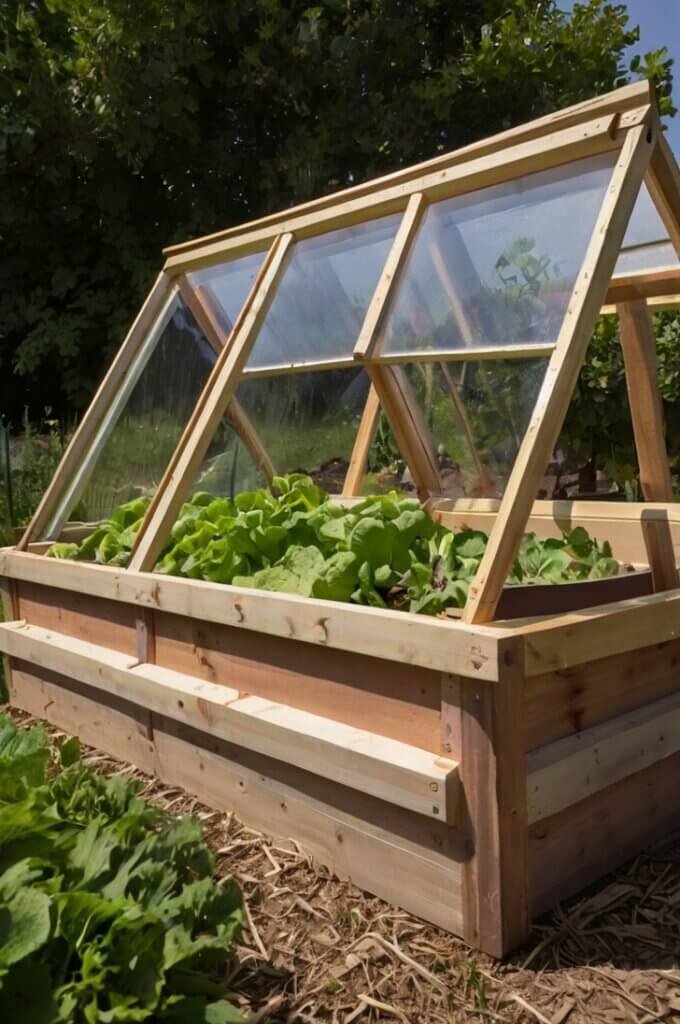
To get the most out of your cold frame, follow these simple but essential tips.
They’ll help you create the perfect environment for your plants to thrive.
Sunlight
Place your cold frame in a south-facing spot to soak up as much sunlight as possible.
This keeps the interior warm and cozy for your plants.
Ventilation
On sunny or warmer days, prop open the lid to let in fresh air.
This prevents the cold frame from getting too hot and keeps your plants happy.
Watering
Check the soil moisture regularly.
The trapped heat inside a cold frame can dry out the soil faster than you’d expect, so your plants may need more frequent watering.
Temperature monitoring
Use a thermometer to keep track of the temperature inside the cold frame.
This helps you avoid overheating on warm days or freezing on cold nights.
Soil preparation
Fill your cold frame with well-draining, nutrient-rich soil.
Healthy soil is the foundation for strong, thriving plants.
- Read also: DIY Plant Lighting: Tips for Building a Multi-Tiered System
- Read also: Transform Your Garden: Easy DIY Greenhouse for Beginners
Final Thoughts
Cold frames are a simple, affordable way to keep your garden thriving beyond the usual growing season.
You don’t need a fancy greenhouse—just a little creativity!
Whether you use old windows, hay bales, or other materials, there’s a DIY cold frame option for every gardener.
Give one of these ideas a try, and you’ll be able to enjoy fresh, homegrown produce for much longer. Happy gardening!


